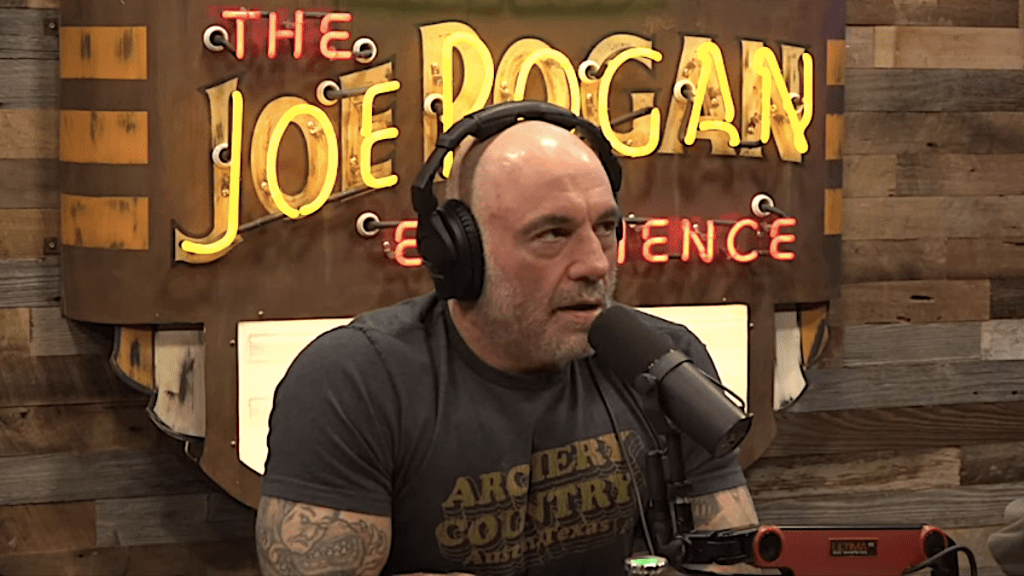Category Archives: The Everyman Chronicles
Joe Rogan Stops Asking Questions
It’s no longer a question of curiosity. It’s complicity.
Joe Rogan, once a meathead philosopher whose podcast flirted with the conspiratorial fringes, has now blown past the boundary into something far darker: a pipeline for antisemitism, medical disinformation, and revisionist history masquerading as “free thought.” And he’s doing it with a smirk, a shrug, and a platform bigger than any news network in America.
Fifteen million Spotify followers. Hundreds of millions of monthly downloads. And lately, a guest list pulled straight from the sewers of the internet.
Let’s start with Ian Carroll. Presented as a “narrative analyst,” Carroll used his Joe Rogan Experience appearance to claim Jeffrey Epstein was part of a global Jewish crime syndicate, that Israel was founded by mobsters, and—without evidence—that it helped orchestrate 9/11. Rogan didn’t push back. He leaned in.
Then came Darryl Cooper, known to Twitter as @MartyrMade. Cooper isn’t just a conspiracy theorist. He’s a Holocaust revisionist. He paints Hitler as misunderstood, suggests Kristallnacht was a false flag, and frames Nazi antisemitism as a response to Jewish manipulation. On Rogan’s show, Cooper recited this garbage in long, uninterrupted stretches. Rogan listened, nodded, and changed the subject.
As if that wasn’t enough, Rogan gave a two-hour platform to Dr. Suzanne Humphries, a discredited vaccine denialist who argues the polio vaccine caused more harm than the disease itself. Again, no real challenge. Just “fascinating stuff.”
And then Douglas Murray sat across from Rogan last week and called him out—gently. Murray, a conservative British intellectual, warned Rogan he was laundering extremism under the guise of balance. Rogan deflected, of course. He always does. “Just letting people talk,” he says.
But when “just talking” includes giving airtime to people who deny the Holocaust, spread vaccine lies, and blame Jews for global crises, it’s not discourse. It’s propaganda.
Rogan is no longer the stoner Socrates he once pretended to be. He’s a culture-shaping megaphone for disinformation, and he’s playing footsie with fascism while raking in Spotify cash.
This is how rot spreads: not with a bang, but with a bro. With a laugh. With plausible deniability and a Spotify exclusive.
No one man should have this mic if he’s going to use it to whisper poison into millions of ears. But here we are. And he’s only getting louder.
Why Republicans Suck
They suck at everything but sticking together.
Republicans, once the party of Lincoln and liberty, now operate more like a grief cult in denial, lamenting an America that never was and torching the one that is.
They have weaponized nostalgia, fused it with grievance, and packaged it into a brand that sells fear of the future as patriotism—flags on trucks, guns in churches, and the gall to call it freedom.
This is not the Grand Old Party; this is the party of the perpetually pissed, who view compassion as weakness and cruelty as governance.
From climate change to healthcare, education to infrastructure, they have no platform beyond the negation of whatever the Democrats propose, like toddlers smearing crayon across the wallpaper because someone else dared to decorate.
Their economic policy is a Ponzi scheme for the rich, their social policy a theological cosplay, and their immigration stance a rotating panic button pushed every election year like clockwork.
They traffic in a politics of bad faith—literally and metaphorically—where truth is optional but obedience is mandatory.
Their recent flirtation with fascism isn’t a bug, it’s a beta test, and the results are in: the base loves it.
They scream about freedom while banning books, cheer on small government while stuffing it into your uterus, and whine about cancel culture while trying to disappear drag queens, diversity, and dissent.
At the state level, they gerrymander democracy into submission, and at the federal level, they hold the nation hostage with the finesse of a drunk uncle waving a steak knife at Thanksgiving.
And through it all—through the insurrections, impeachments, and indictments—there remains a stubborn refusal among “reasonable Republicans” to call any of it what it is: shameful, dangerous, un-American.
Anti-science; anti-intellectualism; ant-choice. If Democrats lack spine, Republicans lack soul.
They are not conservatives; they are regressives cosplaying as revolutionaries, hellbent on dragging the country back to a past where only a few had rights and the rest knew their place.
And their singular success—perhaps their only one—is convincing half the country that spite is a strategy and cruelty is a cure.
History may not judge them kindly, but cruelty doesn’t worry about history.
It votes.
It gerrymanders.
And it always shows up wearing a red hat.



